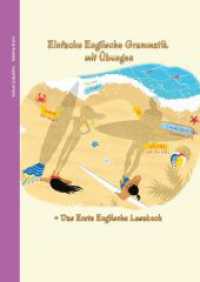- ホーム
- > 洋書
- > ドイツ書
- > Social Sciences, Jurisprudence & Economy
- > Politics, Society, Work
- > political science
Full Description
This book explores origins, manifestations, and functions of Pan-Slavism in contemporary Central and Eastern Europe, arguing that despite the extinction of Pan-Slavism as an articulated Romantic-era geopolitical ideology, a number of related discourses, metaphors, and emotions have spilled over into the mainstream debates and popular imagination.








